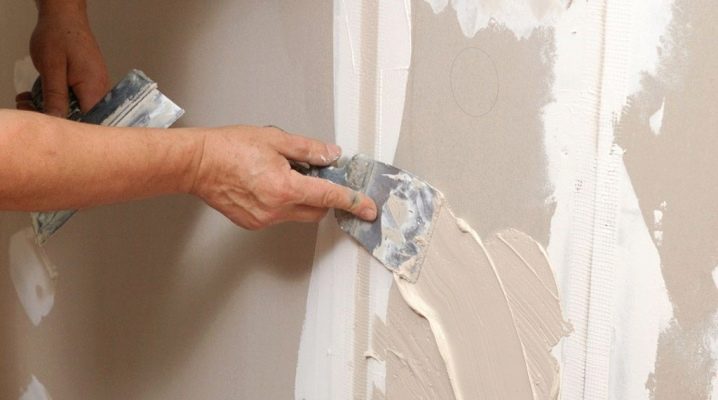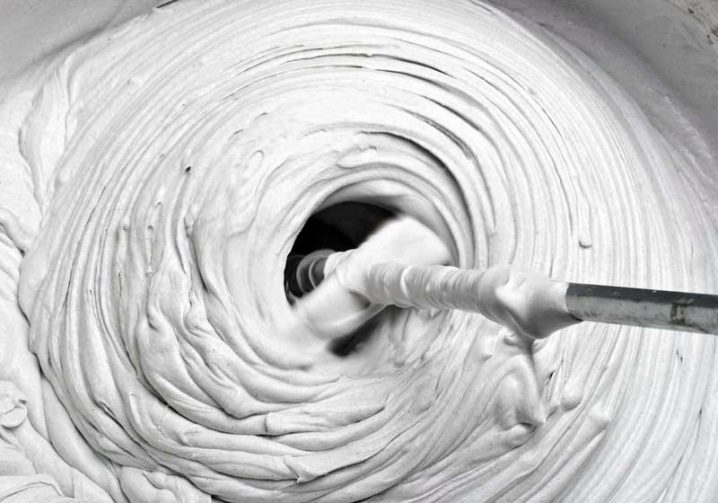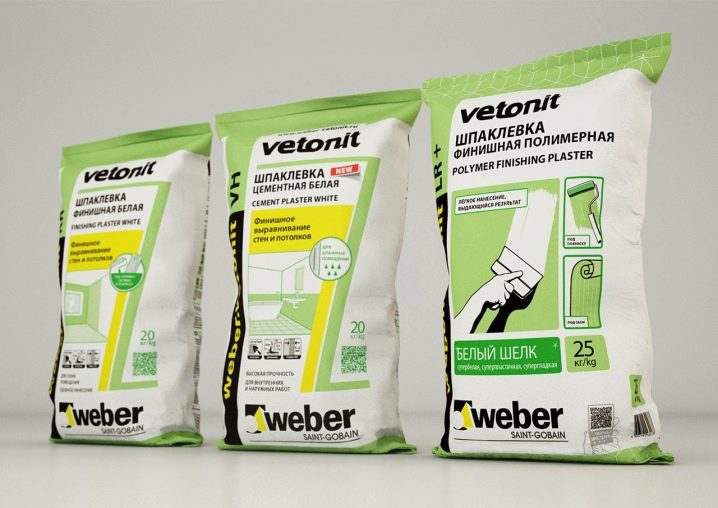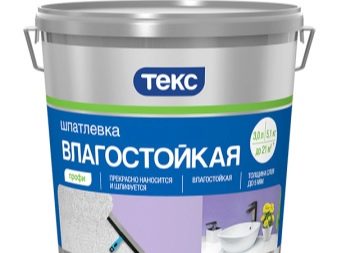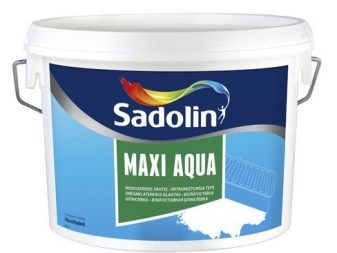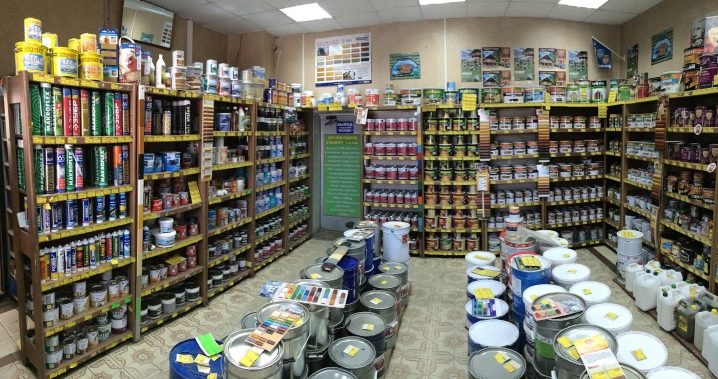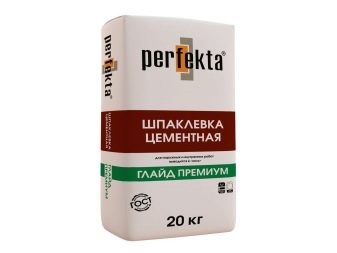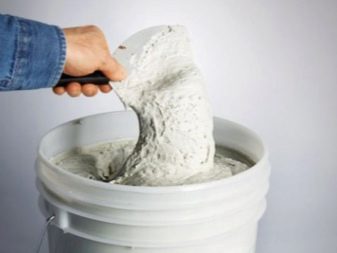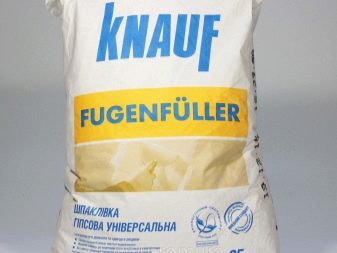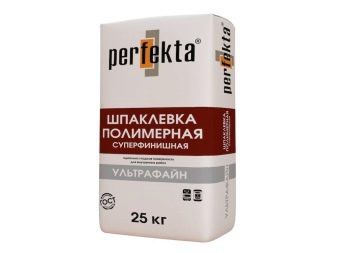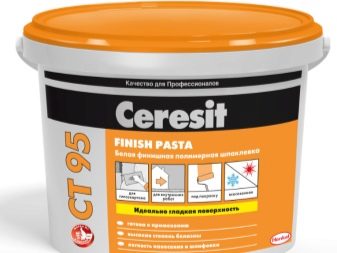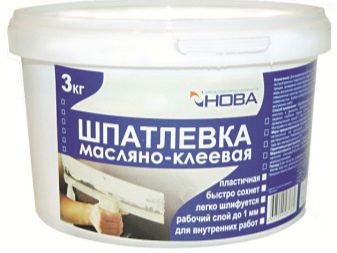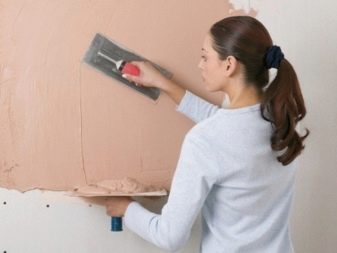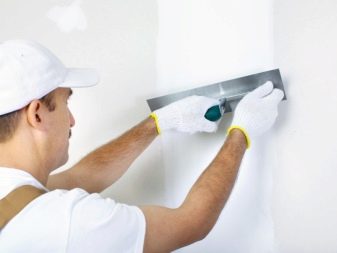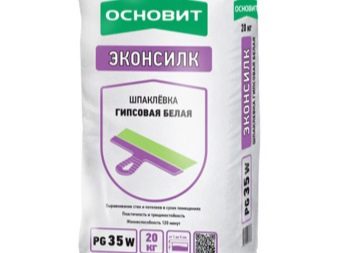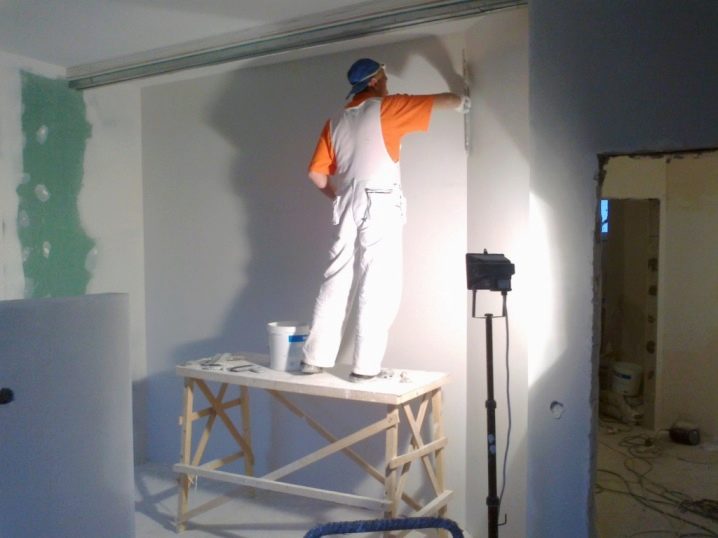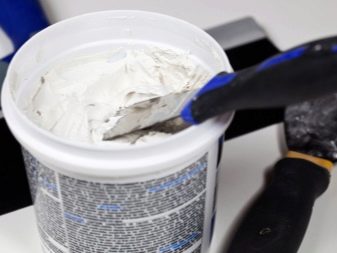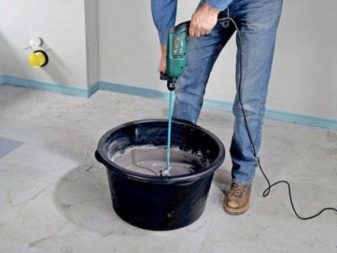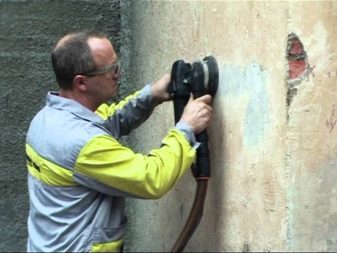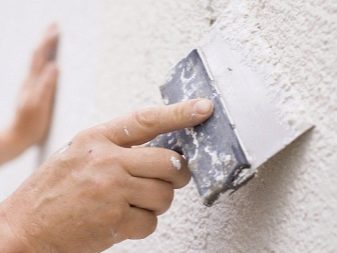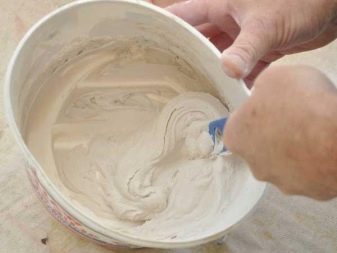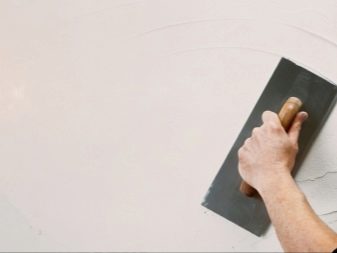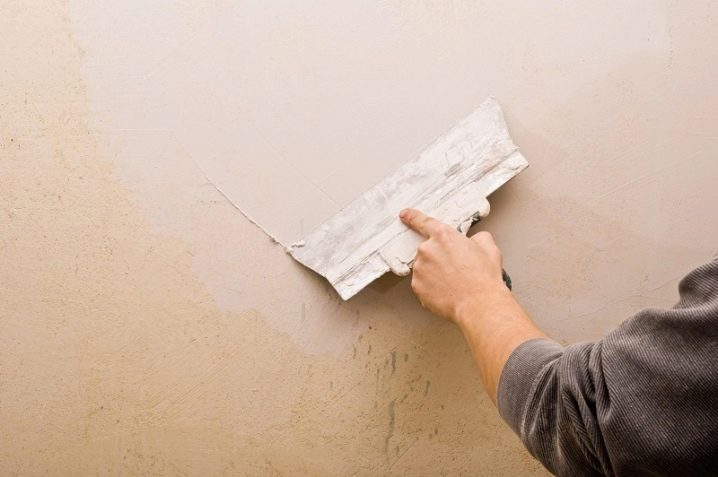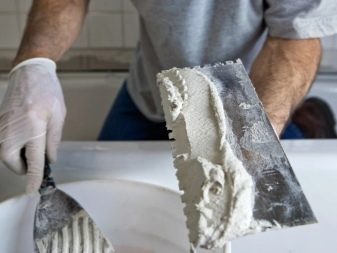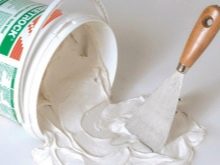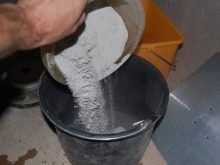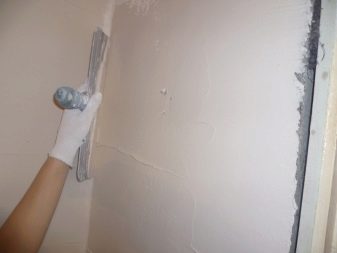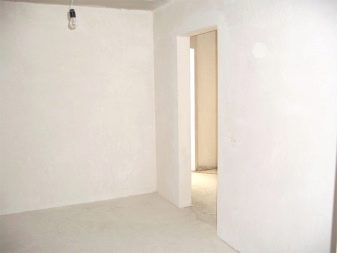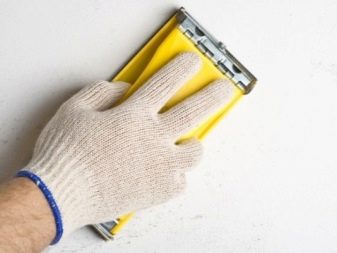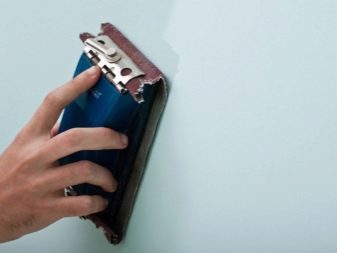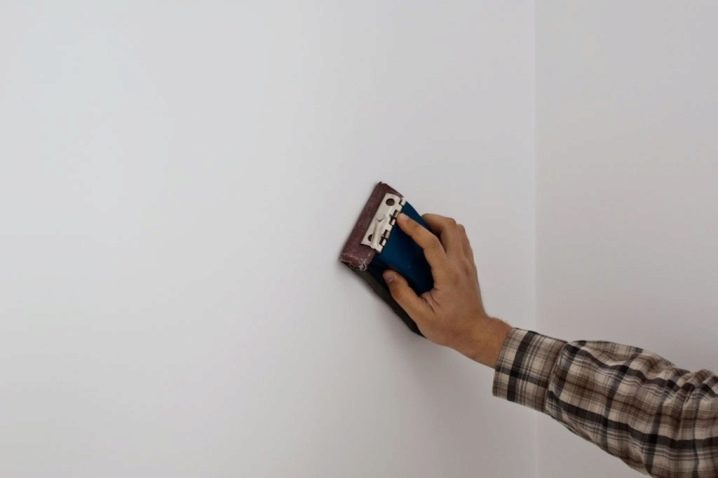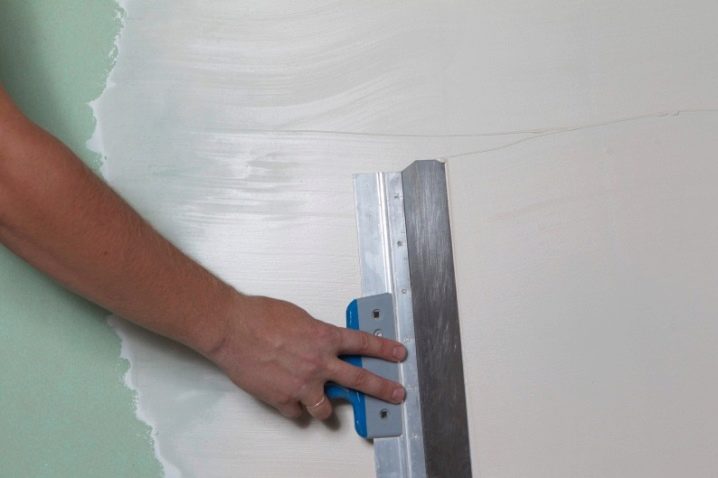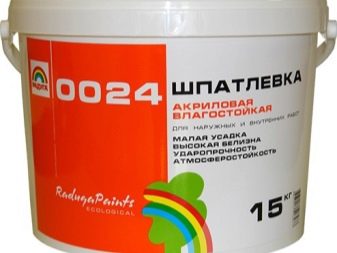How to choose a moisture resistant putty for the bathroom?
Puttying is the final layer of wall finish, the task of which is to eliminate minor defects, such as cracks and minor irregularities. There are several types of putty, but in this article we will talk about water-resistant putty, the features of its action, application and selection rules. This waterproof mixture is also suitable for outdoor use.
Benefits
Bathrooms often have a high level of humidity. That is why the choice of putty plays a big role for finishing work.
Moisture resistant putty is different from the usual in that when exposed to moisture, it will not lose its strength characteristics in contrast to its other varieties.
This is the most important advantage, because it is because of him that the service life of interior walls increases significantly. To paint on the walls and the ceiling has not lost its appearance, it is necessary to use such putty. In addition, this type of mixture is unfavorable for the reproduction of microorganisms: you can be sure that there will be no mold under the wall tile.
This variety is more expensive than the others, but its choice for wet rooms is the most rational. It is more logical to pay a higher price initially than later to fork out for a new repair.
Species
Moisture resistant putty has several varieties that have possesses positive qualities, and, therefore, are best suited for different conditions. To select the most appropriate subspecies, you need to know their features.
- Cement. Differs in the increased resistance to moisture therefore it is excellent option for a bathroom. This type of putty has its pros and cons. The advantages include good moisture resistance and reasonable price. Moreover, moisture only strengthens the base of the cement coating. Minus - the mixture has a granular structure and a grayish tint, which makes it inappropriate for applying white paint on top.
- Gypsum. It has a light shade, and it is ideal for painting walls in white or any other light shade. Easy to apply. The disadvantage is the intolerance of temperature shocks, which makes it unsuitable for work with facades.
- Polymer The composition of the mixture includes high-tech particles, and the polymerization occurs upon contact with air. It is possible to put putty without special haste as it does not lose plasticity for a long time. During the application of the material it is necessary to protect the respiratory tract with a respirator.
- Oil-adhesive. The budget option suitable for "picky" outbuildings. It is a powder that is diluted in water.
The purpose of the putty is divided into:
- finishing - sold already ready for final wall finishing;
- leveling - needed for the initial alignment of the surfaces of the walls or ceiling;
- universal - suitable for leveling and finishing.
Putty differs in a form of release of mix:
- Dry - sold in powder form, which must be diluted in water. Such mixtures harden faster than the others, so you need to work faster, doing work in small pieces.
- Ready - more expensive, but also more durable material. Over time, during operation, its characteristics are not lost. If you do not have much experience in repair, this option is the most suitable for you. You will spend less time on repair work, since you will not have to spend it on preparing the mixture, and you definitely cannot go wrong when mixing.
Selection features
To find a good material, it is necessary to carefully examine the range of products offered on the market. Attention should be paid to the Knauf mixture, which has high characteristics and moisture resistance.
If on the package with a substance there is such a term as hydrophobicity, then it is worth putting it in two layers. Then the wall covering will be smooth and reliable.
It is also worth considering that mixtures with coarse sand are suitable for brick walls. It is better to apply mixes with fine sand on smooth walls.
Before buying a mixture, you need to make some calculations. To begin with, calculate the total surface area in which you intend to work. After that, approximately calculate the average thickness of the layer of the mixture, based on the curvature of the wall.This is necessary in order to calculate the volume of the required material. Purchase as much mixture as possible to keep approximately 10% of the stock.
Preliminary work
The appearance of the walls depends on how well the walls are prepared for puttying. Well-finished walls look neat, they will safely absorb all subsequent layers of coatings. For the final painting you need to perfectly sand the wall.
If you have decided on the choice of mixture for putty, you can start preparing for painting.
Recommendations:
- Inspect surfaces for rot, dirt, or mildew.
- Wash away all dust and dirt from the wall with a cloth moistened with water.
- Destroy the old wall covering. You can do this mechanically using a grinder, sandpaper or scraper. Perfect grinding diamond machine. In addition, you can use special substances for dismantling.
- Irregularities and protrusions on the surface should be eliminated. Cracks (if any) must first be widened, and then proceed to the stripping.
- If the wall has a large number of grooves, cracks and irregularities, fill them with cement plaster.This will make the wall smooth and cover all existing holes.
- Before filling it is necessary to dry the surface if it is wet. Clean the mold or fungus if it is present. Above go soldering iron.
- The joints and seams of the room more than any other zones are susceptible to reproduction of microorganisms, so you should pay more attention to them when processing the walls with an antiseptic.
- Treat the walls with a primer. This will fix the surface and fill all cracks. Also, the primer has an antibacterial effect. Applying a primer is very simple, you can do it with a spray gun.
- Large cracks and holes can be repaired with foam. The use of foam does not require special skills, it is not difficult.
Puttying
The packaging of the filler should contain information that the material is suitable for wet rooms. In addition, the mixture should refer to the above varieties. If all conditions are met, you can proceed to puttying yourself. Next we give the algorithm.
Layers
If there are large irregularities on the wall that need to be filled with a mixture of one centimeter thick,proceed with the initial putty. If the result is only needed to fix, then you only need the finish.
Preparation of the solution
Most often, the consumer's choice falls on dry putty. In order to start using it, you first need to prepare it accordingly.
Pour the required amount of Axton solution into a bucket or any other container., then add a little water. At this time, do not forget to stir the mass with a drill with a mixer attachment. Leave the solution for 10 minutes. During this time, all additives are finally dissolved, forming a pasty consistency. After that it is necessary to mix the resulting substance again.
It should be remembered that it is not necessary to prepare a large amount of solution at a time.
During the time while you work with the wall, it will harden and will no longer be suitable. So you should create material in small portions.
Drawing
Perhaps the most crucial part. But do not be in a hurry to be nervous: a little practice - and you will learn how to putty well. For work requires three spatulas: large, medium and small. A small spatula will be needed to work out hard-to-reach places.
On large components of the wall throw a solution from below, and then align it with the rule. If this is not possible, apply the mixture on a large spatula with a medium one.
Special tool form the corners of the room. Dry the walls. Avoid drafts and exposure to ultraviolet radiation while walls are drying out. Usually the process takes 14-18 hours.
The optimum temperature for drying walls is about twenty degrees. If the raw material consists of cement, the moisture will act on the base only beneficially.
Preparation for painting
When the putty is dry, you can start applying paint on the walls. It is necessary to proceed to this stage no later than 1-2 days after adjusting the wall, otherwise the substance with which the surface is coated will become too strong and unsuitable for polishing. In order to proceed with the staining, it is necessary to prepare for the procedure, namely, put on a respirator and a special suit. Dust, particles of paint and sand in large quantities will fill the air and can irritate the upper and lower respiratory tract. The grid of abrasive should be fixed on your chosen tool for adjusting the walls.
Instead of mesh, you can use sandpaper.
The walls are treated with circular motions. Sand the wall until it is perfectly level. To evaluate the results, use a level or rule.
Air the room from dust, then use a primer. It will make the walls stronger and fix the previously laid foundation.
Recommendations of specialists
These rules will help you successfully cope with the application of moisture resistant putty:
- reinforce mesh coating to increase its strength;
- mortars should be applied not too thick layers. A layer with a thickness of 3 mm is perfect for successful application;
- The use of artificial drying methods (heat guns, heaters) is not very effective. Drying the mixture too quickly can cause cracking of the wall;
- pigment can be added to the working solution to match the color of the future external coating of the walls, for example, paint or wallpaper;
- facade plastering is great for rooms with a high level of humidity, such as a bathroom, kitchen or room with a pool;
- work should be in a room with air temperature more than 15 degrees;
- sanding for subsequent paint application requires more diligence than sanding for tile application;
- in the bathroom the best solution is a moisture resistant coating. The usual types of putty will serve you for a short time and will lead to not the most pleasant consequences: to a damaged appearance of repair and a complete replacement of the finishing layer.
Moisture resistant putty does not require special skills in handling it. Despite the relatively high price, this material will serve you for many years up to several decades. It is important to be able to correctly apply the mixture to the surface of the walls, and then the result of the work will delight you and your family.
On what kind of putty is better to choose and for which premises, see the following video.
